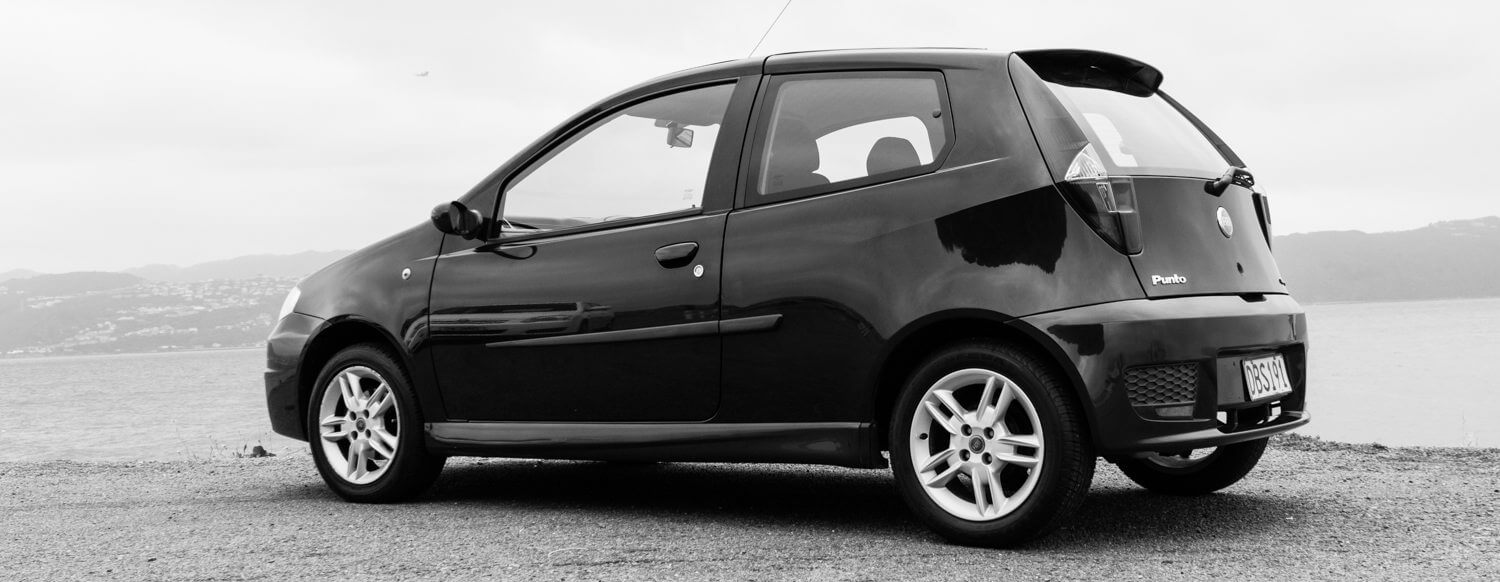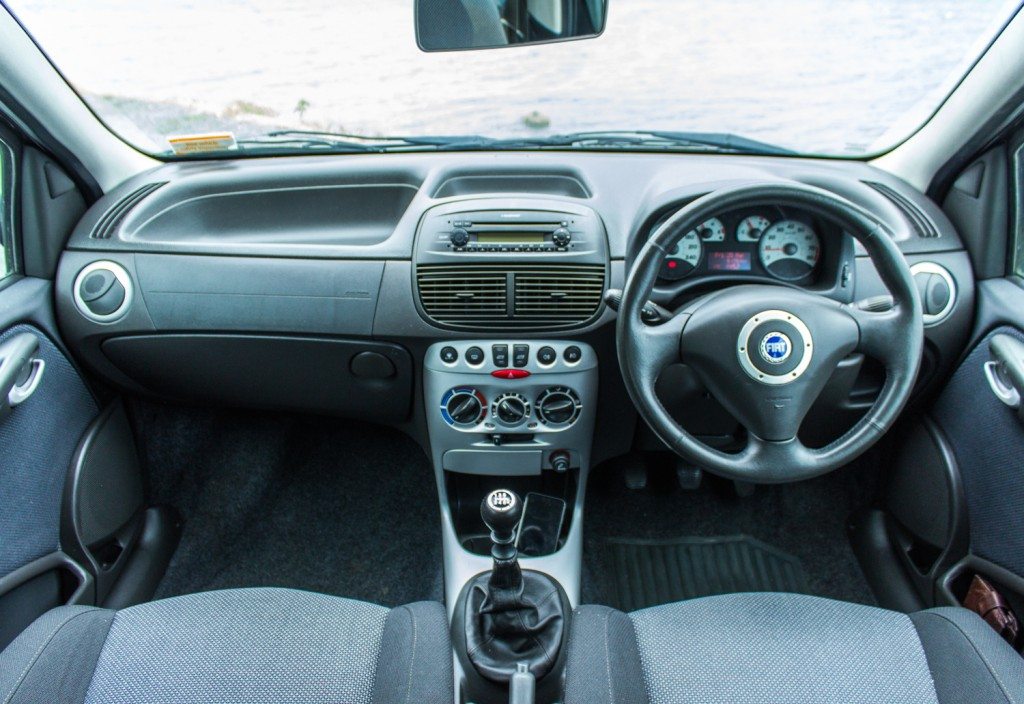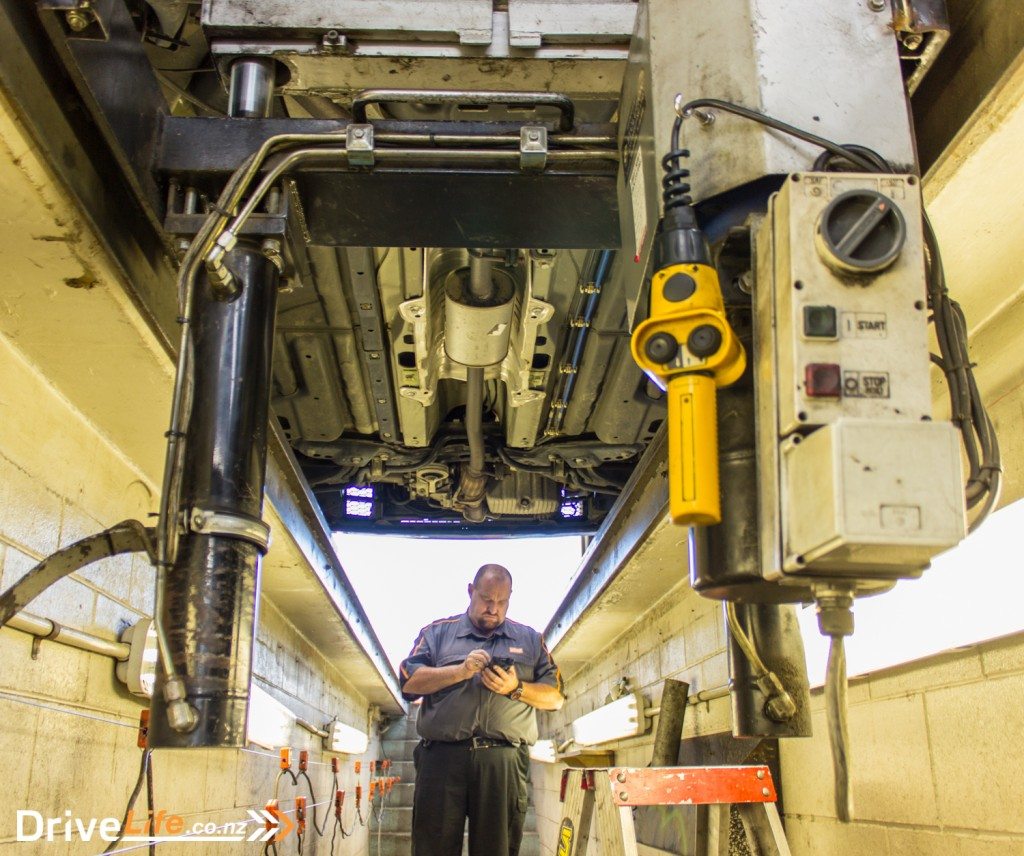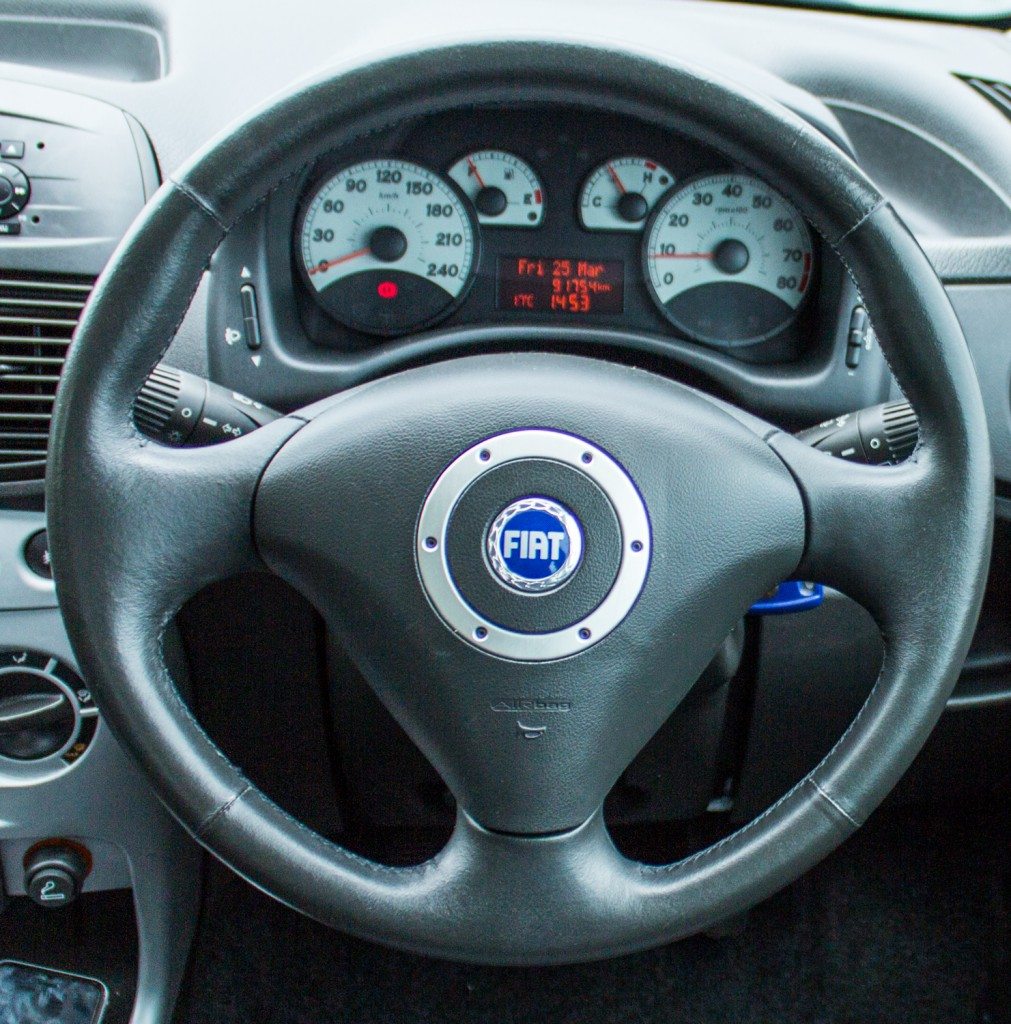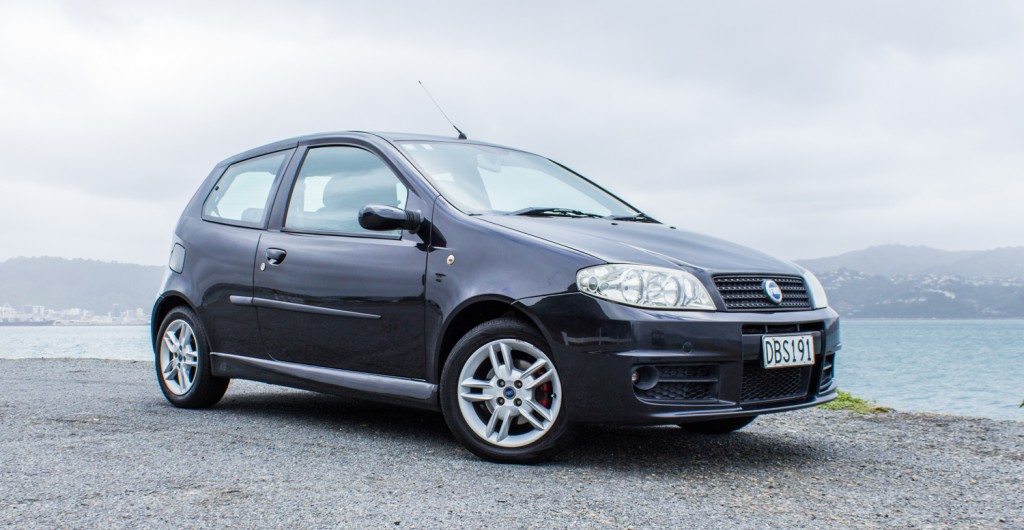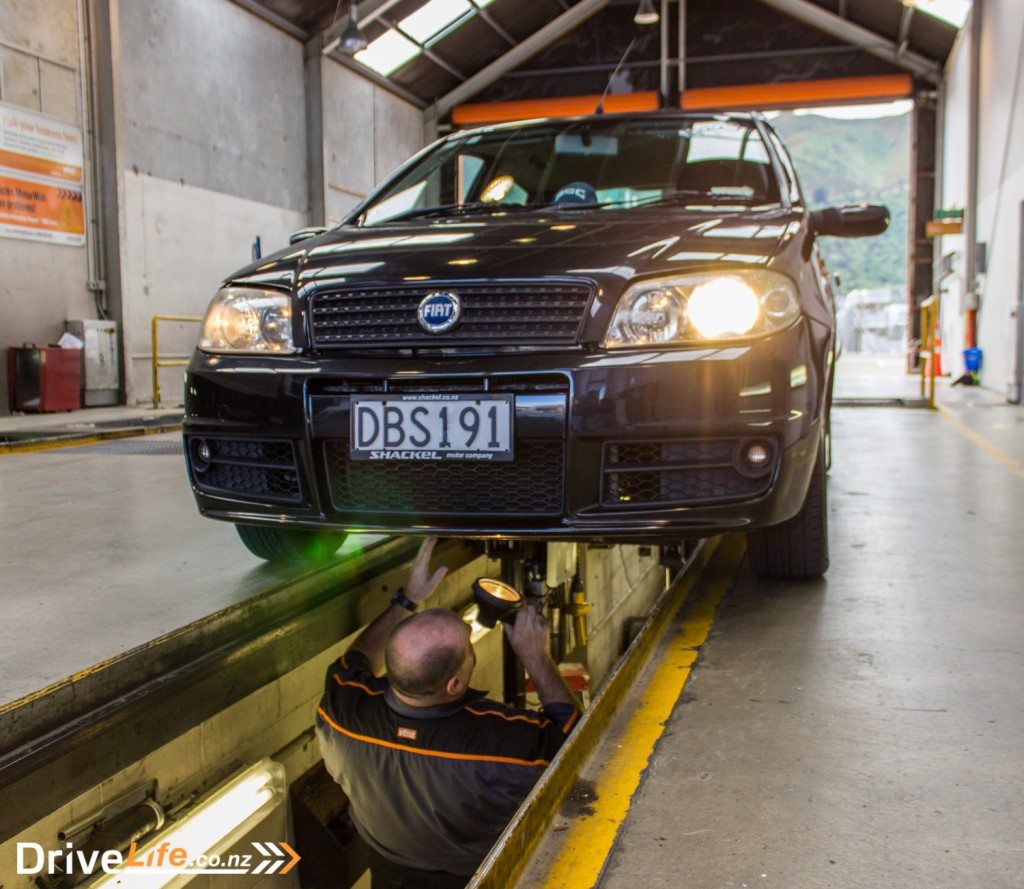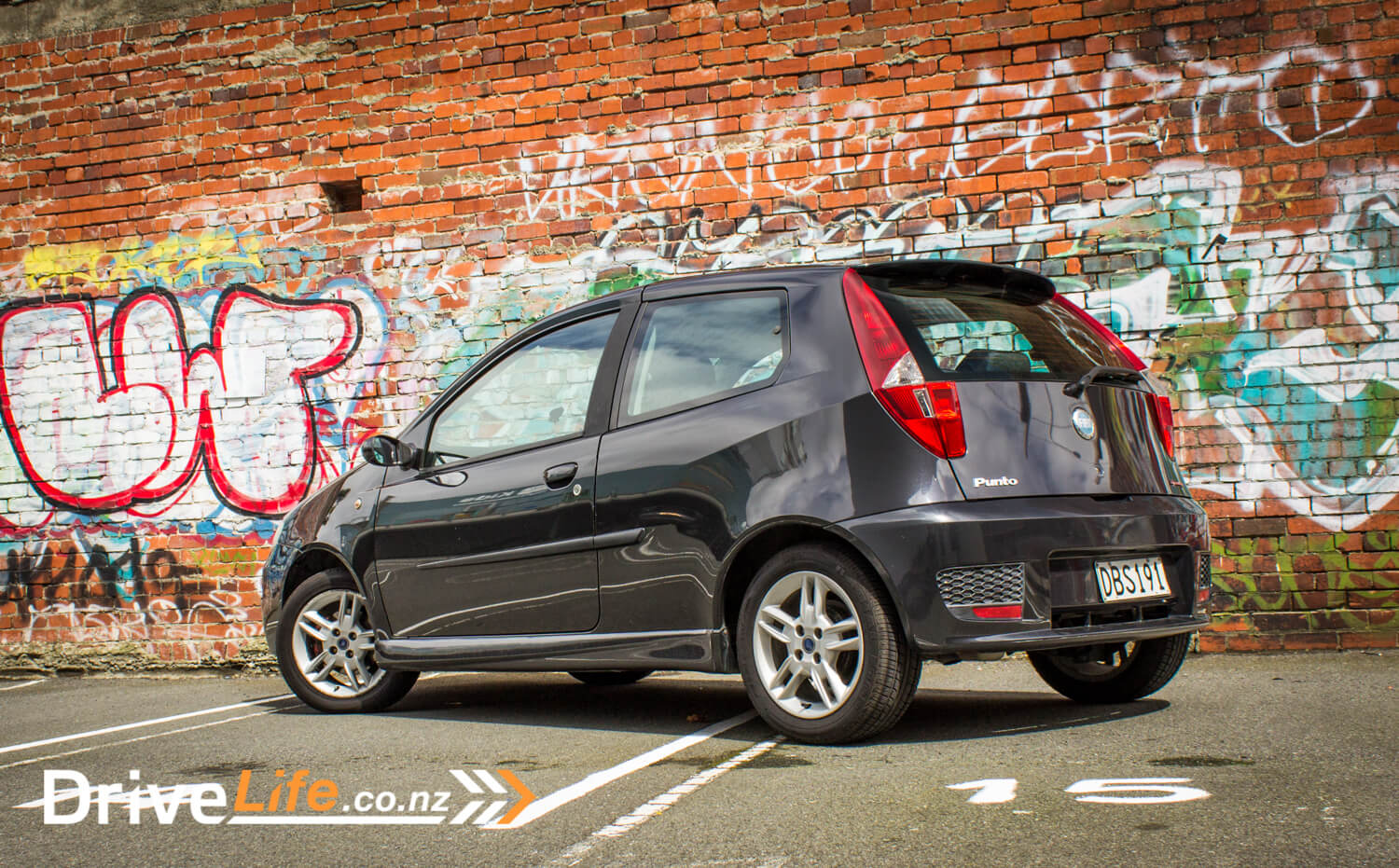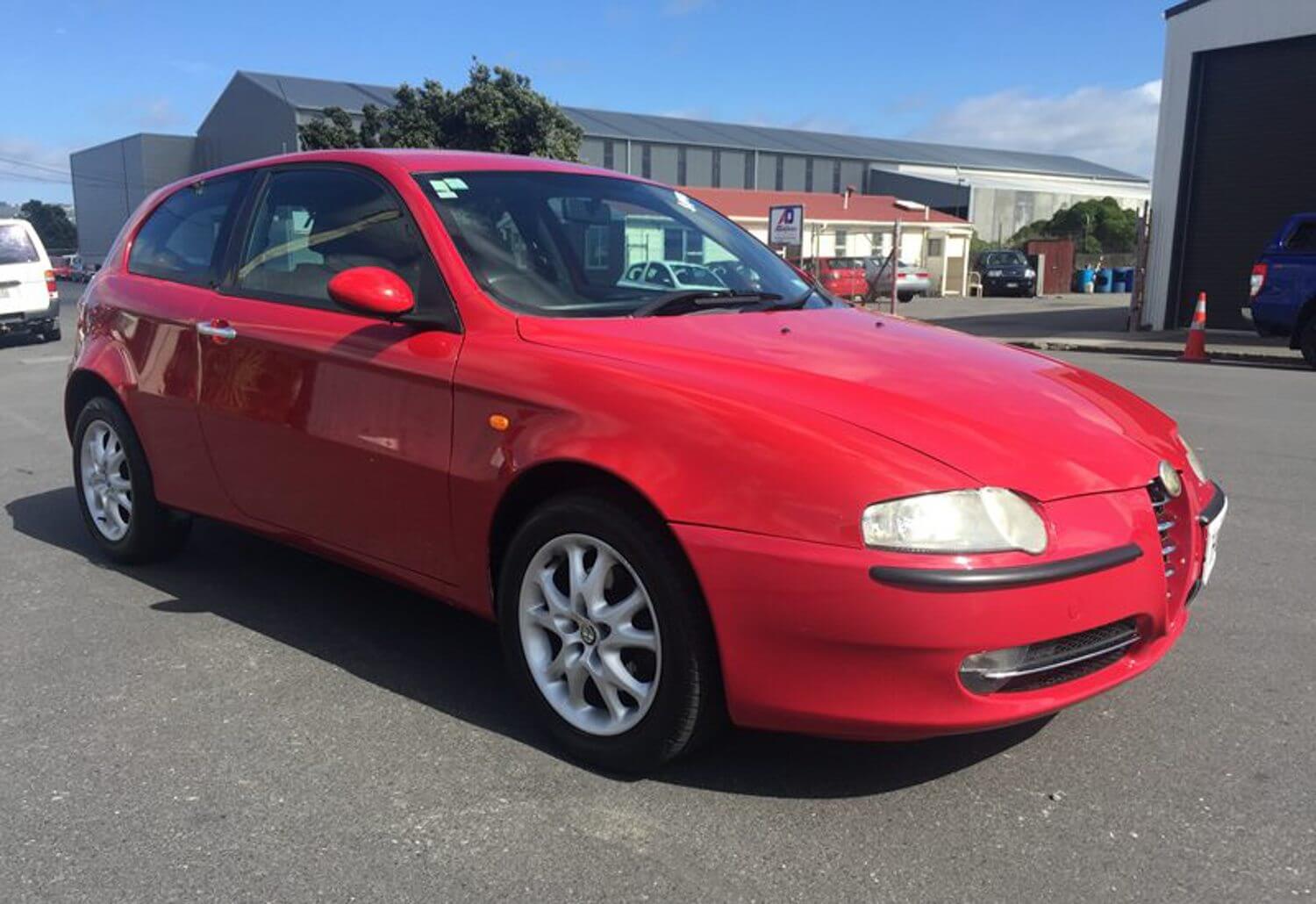Those who read the first two articles in this series would be expecting me to now show you how the Alfa 147 got on at VTNZ, getting a Pre-Purchase Assessment. That’s not quite how things have panned out…
You may remember my initial criteria; European, four cylinder, preferably New Zealand-new, manual, and $5K max. The 147 I had my heart set on is a 2003 model, Japanese import with 114K on the clock. It has some paint problems where the front guards have been repainted, but nothing else, so there is a huge difference in the brightness of the paint at the front. The rest of the Alfa looked ok, and I had it booked in for Saturday for its Pre-Purchase Assessment (PPA) at VTNZ.
Then on Thursday that week, what shows up on TradeMe but a lovely little New Zealand-new 2005 Fiat Punto Sporting.
Not just any Punto ‘Sport’ though – just 91K on the clock, and black (not grey – yes!), 6-speed manual and a 1.4 motor – great for my daughter to learn to drive in. Even for a 2005 model, it’s quite well equipped with a trip computer, Hill Start Assist, auto wipers, ASR, Blaupunkt audio, 15” factory alloys, sports seats, City steering assist function, and front/rear fog lights.
I shot out to Seaview in Wellington on Thursday and drove the Punto around the block – it was excellent. Nowhere near as good a handling as the Alfa, but I wasn’t expecting it to be.
Really, I wanted it to be a harder decision – which car to take for its assessment – but in the end it was simple; the Punto is newer, has less kilometres on the clock, is New Zealand new, has a 6-speed box and no obvious paint problems.
Saturday duly turned up and I fronted up to VTNZ in Seaview, after booking in a Pre-Purchase Assessment online – but with the Punto. It won me over the 147. I love that 147 and one day – one day! – I will own an Alfa Romeo, thereby keeping a firm hold on my Man Card.
It’s off to VTNZ
Brian Simmons is ‘my guy’ who will do the assessment. I’ll be honest now and say I have not had any such check done for too long a time. Like many, I either: A: rely on my own judgement, or if from a dealer, rely on the dealer to cover any problems; or B: hope like hell it will be good. Not this time – I wanted to make sure this euro car was not going to fall apart any time soon.
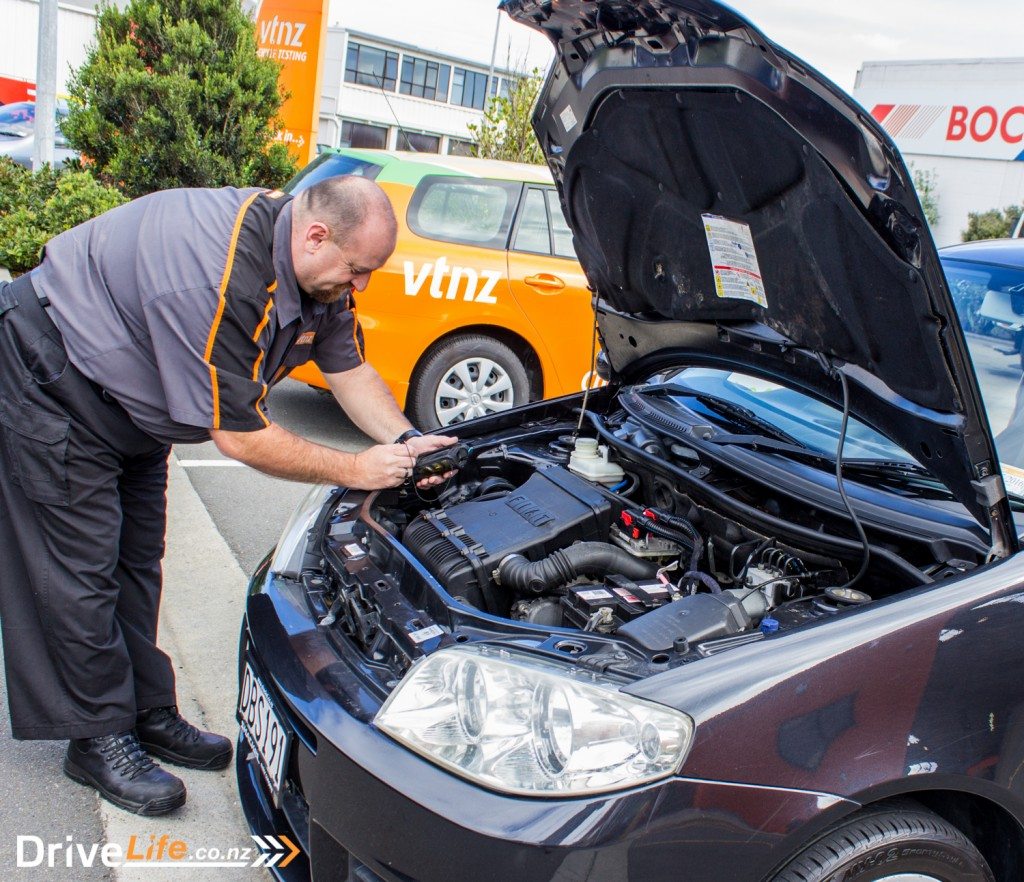
Brian spent 1 ½ hours going over the whole car; interior, underside, exterior, engine. He also took it for a road test and then delivered to me a comprehensive report on the Fiat. I must say, I was impressed as to how thorough the assessment was; for the mechanics (other than a visual inspection) a vacuum test is carried out, as well as a battery and radiator pressure test. The underside was scrutinised much more than if it was just a WoF, and all the time Brian was searching for tell-tale signs of a crash or major repairs, as well as looking for potentially expensive future problems. He took photos of things that are, or may be an issue and these were included in the report.
The brakes were thoroughly tested and also things like recent brake work (new wheel cylinders on the rear) were pointed out.
He picked up that there had been some paint or perhaps panel damage and then paint on the driver’s side front guard, but after close inspection, called it as probably not from a major prang, perhaps just a scrape. I could barely tell and certainly I would not have picked this up. Once he pointed it out I noted that it was obvious the guard had been painted off the car, so hopefully not a quick-and-dirty fix.
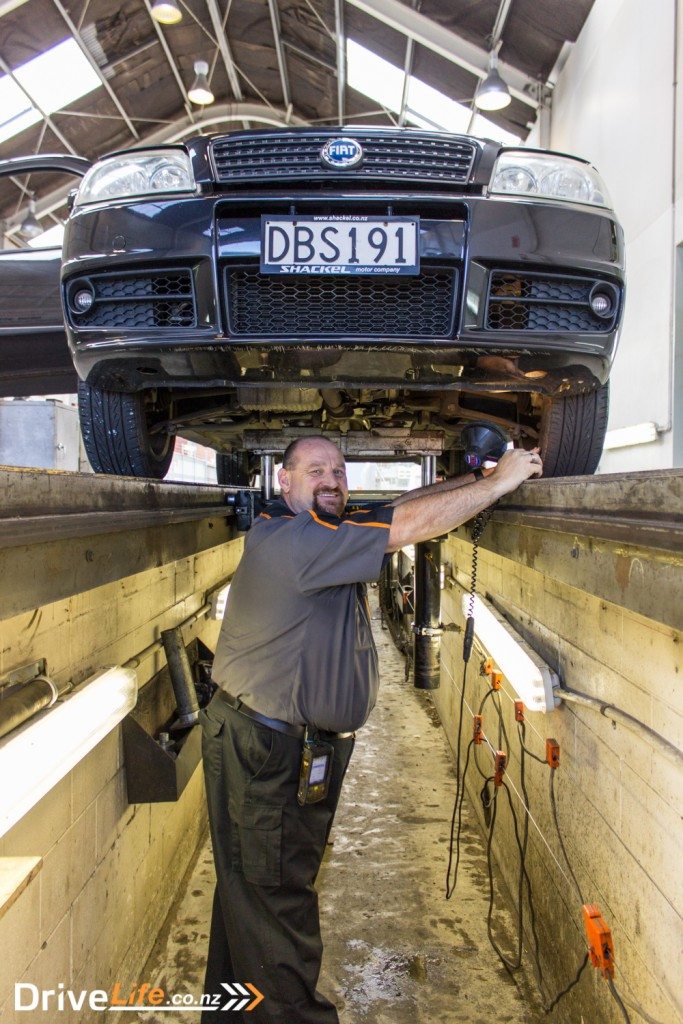
All in all, the Fiat fairly flew through the test. No major faults and nothing that would be a deal breaker.
Of the Fiat, Brian ended with, “For its age, it has really low kilometres on it. It has some normal wear and tear on it but it’s great value for the price and I can’t believe how good the interior is. We see Euro cars of that age with switches breaking, but not so the little Fiat. There has been some sort of panel repair, it has obviously been looked after really well, with all the equipment that it comes with is actually working.”
So what did I do? Took the car back to the dealer, and plonked down $5,000 of my hard-earned cash. I believe it is great value and it fits perfectly to the type of euro car I was looking for.
Is it time for Buyer’s Remorse?
Sure it’s early days, but so far I am loving ‘Stumpy’ (my daughter has naming rights). It’s peppy for a 1.4-litre, and that 6-speed box is a gem – one finger gear changes are totally possible. The boot room for such a short stumpy car is impressive, and even rear legroom is generous for the size of the car, assuming you don’t have a 6-footer in the driver’s seat. I am still looking through the 250-page owner’s manual and am impressed by just how much equipment this little Fiat came out with in 2005. I miss having Bluetooth, but I never expected any Euro car in this challenge to have that anyway.
This particular Punto is super tidy – the interior is almost as-new, the underside is spotless and even the exterior is pretty darn good. From 10 feet it looks like it’s worth far more than $5K.
Am I happy I went Euro? Yes! Stumpy does have some character, goes great, looks superb and is definitely different than all the grey 4-door cars out there.
Living the dream!
Catch me again when I’ll do the next part of the $5K Euro Challenge: 6 months on.
$5K Euro Challenge: your turn?
Have you ever been tempted to do what I did? Perhaps you did what I did, and bought a Euro when your friends said “no!”
Share your experiences – good or bad – in the comments box, and let Drive Life and our readers know how you got on.
Pre-Purchase Assessments: are they worth it?
After the Fiat was all done, it was time to have a frank chat with Brian on why people should bother with getting a car checked out before buying it.
I for one, thought that Pre-Purchase Assessments (PPA) were rarely taken up, but apparently I am wrong.
“It’s very common, particularly with now TradeMe where people around buying from outside of home area,” Brian says. We are getting people from all around the country booking them in online – some are even living in Auckland and getting a PPA for a car in Dunedin, for example.”
I had to be honest here with Brian: why get an assessment if the car has a WoF? Isn’t that enough of an indicator?
“Sure, lots of people don’t get a PPA and rely on a WoF for a sort of pre purchase check,” he says. “But WoF requirements are just a point in time check, where a PPA looks at future issues and notes these. I know some clients will take this info back to the dealer or seller and negotiate a better price, knowing that in future there will be repairs needed, so we have found the PPA to be a bargaining tool. I had one this week with a lady who wanted to buy a Mini Cooper – it needed some work, not urgent but certainly would need money spent on it. She took this and negotiated a $1000 discount on the car.”
Brian gave me an example of a WoF vs PPA. “A WoF is a snapshot – let’s say the tires are up to WoF standard now – that doesn’t mean they will be in 12 months. We will look at the tyres under a PPA and advise on this. Under a WoF, they either pass or they don’t – there’s no other indicator. For example for the little Fiat – it has some UV damage to the headlight and this will need to be looked at in future. It’s not affecting the beam now and it would pass a WoF, but under a PPA we point this out that it will need something doing to it in the future.
Where I thought that VTNZ would mainly be getting people buying privately getting a PPA, Brian says it’s around 50/50 with private sellers and dealer sales. Interesting and the opposite of what I thought.
Okay, so what does an inspector look for when doing an assessment? “We get hints going around the car, obvious damage to body seams, spanner marks on bolts, cracks that have been plastic welded, or perhaps brand new number plates. These things are ignored under a WoF so you just don’t know.”
For just $149 for one of these VTNZ Comprehensive Pre-Purchase Assessments, I believe you would be crazy not to get one – especially if you are dead keen on that car that’s 500km from your house…the decision to buy sight-unseen gets a little easier when you can get the car checked out in advance. Dealer or private – I’m sold on getting one every time.
Read more about VTNZ’s Pre Purchase Assessment service here.
Comment from the MTA on Pre Purchase Assessments
The Motor Trade Association (MTA) runs a mediation line – the one people call if they have a problem with a dealer who sells a car, and who is an MTA member. The mediation line gets calls from members of the public who have bought a car and aren’t happy, among other things.
Tony Everett, the Dealer Services and Mediation Manager, has some hard and fast advice for people considering buying a used car from a dealer or a private seller – in person or sight unseen.
“A Pre-Purchase check is absolutely a good idea,” he says. “ At the very least if you rate your mechanical skills then check it over yourself. If your knowledge about cars is scant, then get someone else to do the check for you. Prevention is better than cure.”
Tony does warn to recognise a Pre-Purchase inspection is largely a ‘non-invasive’ check. The inspector won’t pull the car apart looking for wear. The inspector can only do some routine tests and look for signs, or noises that might be indicative of a problem. The inspector will know what to look for, and where to look for tell-tale signs. But recognise that a fault might not be evident today, but tomorrow something might suddenly fail. A Pre-Purchase check is not fool-proof, but it does help shift the odds a little more in your favour, he says.
“Remember a used car, by definition has been used. All parts are worn to a varying extent. The car will still need to be serviced in the future and some parts will have to be replaced. That’s life.
If the car you are looking at is near where you live, and you have a local mechanic which you trust, ask him to do the check. Remember he might well end up servicing it for you in the future so it is in his interest to do a good job and keep your trust.”
“Another important point; do the check before you buy the car – not afterwards. There is a clue in the name – it is a Pre-Purchase check, not ‘post-purchase’. Yet believe it or not, some people get it wrong. They get caught up in the emotion of buying, and then once they have the car in their care they only then start to look at the vehicle with a more critical ‘eye’. They find a few ‘niggles’ and then take the car for an inspection. The result is not always comforting.”
Tony goes on to say if you bought the car from a reputable dealer they will have a good chance of recovery – well at least for any existing faults – but not for other things which might need to be looked at in the near future (eg replacement tyres or brake pads in a few months).
“On the other hand if the car was bought privately, you most likely have no recourse,” he warns. “Suddenly the $150 (for a Pre-Purchase Inspection) begins to look like a real bargain.”
Hutt Valley Wholesale: Euro Specialists?
I bought Stumpy from HVW in Seaview, Wellington. You may remember they have the Saab 9-3 that I was keen on, for $3950. The biggest surprise when you walk into this yard is the number of euro cars for sale, most of them under $15K and many under $10k. Surely they are mad, if the horror stories of euro cars being unreliable and expensive to fix are to be believed? Don’t most dealers run a mile from cheap euro cars?
Mike from HVW had some words for me on why they sell cheap euro cars, and will continue to do so.
“Euros are becoming much more acceptable, partly because mechanics aren’t being put off them,” he says. ”The mechanics now have their own diagnostic gear for the Euro cars, which wasn’t the case in the past.”
Mike is also seeing people from the UK coming to New Zealand looking for what they had in the UK. They are comfortable with Euro cars and so stick with what they know.
“Ambulances are Mercedes Benz after all. We also get lots of Middle Eastern people buying our euro cars – they love them. You’ll never fall in love with anything but a euro car. Some people want a car for A-to-B, but others want something they will enjoy driving.”
Do people avoid the high mileage Euros? Apparently not always. “I had one guy who wanted a reliable car to get to Auckland, so he bought an Alfa we had with over 200,000K on the clock. When I asked him why, he said, ‘well if it’s lasted this long, it must be a good one.’”
Mike’s parting shot? “Once you go Euro, you don’t go back.”


